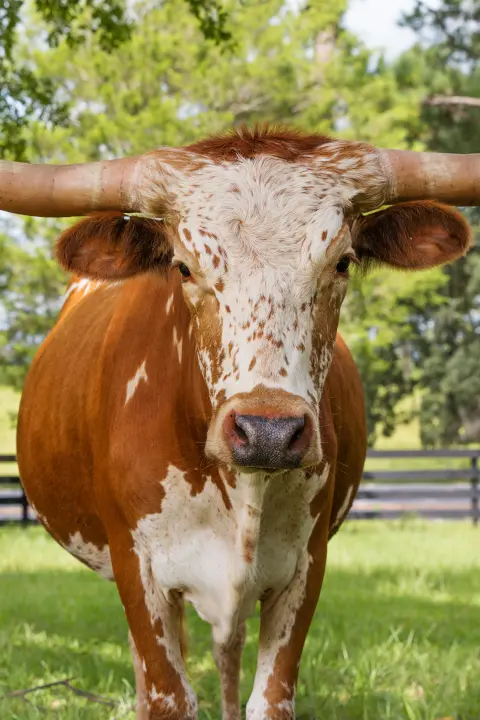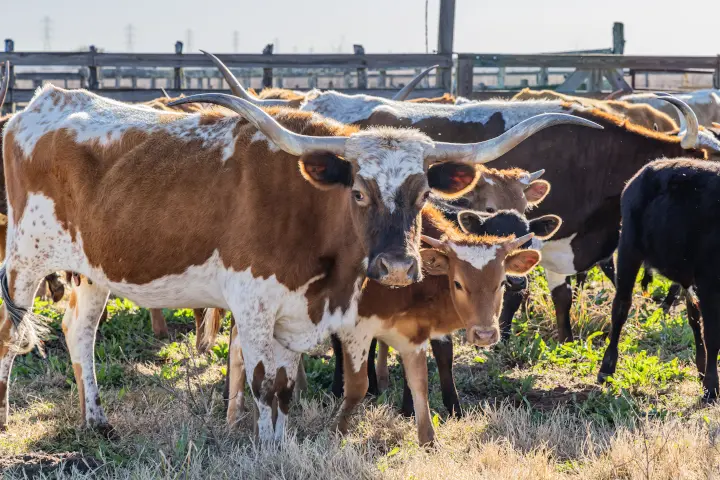August 21, 2025
Texas Longhorns are more than just a symbol of the Lone Star State. They are a rugged, self-sufficient breed known for their resilience, efficient foraging, and unmistakable long horns that span up to seven feet. If you own or manage Longhorn cattle, your fencing must do more than just keep them contained—it must protect them and optimize your land use.
At Fred Nuncio Fencing, we've worked on ranches across Texas, building fence solutions that account for every unique need—especially when it comes to Longhorns. Here’s what you should know:
Why Longhorns Need Special Fencing
Their expansive horns can get caught in standard fence openings or tight gate corners. Longhorns are also adept at navigating difficult terrain, so fences need to balance durability and flexibility.
Best Fence Types for Longhorns

1. Pipe & Cable Fencing
- Why it works: Wide spacing allows horn clearance and excellent visibility.
- Durability: Steel pipe posts and horizontal cables handle pressure from large animals.
- Added Benefit: Clean aesthetics and longevity with minimal maintenance.
2. High-Tensile Wire with T-Posts
- Why it works: Flexible enough to absorb impact but strong enough to deter escape.
- Spacing Tip: Wider post and wire gaps reduce entanglement risks.
3. No-Climb Horse Wire (Optional Inner Barrier)
- Why it works: For added calf safety or when running mixed herds.
- Key Addition: Place behind primary fencing to avoid horn contact.
Key Design Considerations
- Post Spacing: Keep posts 8-10 feet apart to reduce sag and bowing.
- Gate Width: Extra-wide gates prevent horn damage and ease movement.
- Corner Bracing: Reinforced H-braces reduce movement and failure at pressure points.
- Height Recommendations: Minimum 5 feet tall; 6 feet preferred in active or high-traffic zones.

Safety and Visibility
Longhorns rely heavily on visual cues. Avoid fences that block their line of sight. Visibility also improves herd flow when rotating pastures.
Consider adding high-visibility markers or reflective strips for both daytime and low-light awareness, especially near gates and corners.
Fence Maintenance Tips
- Inspect Regularly: Watch for sagging wires, broken posts, or gate misalignment.
- Vegetation Management: Clear brush to prevent wear and improve visibility.
- Seasonal Checks: Summer heat and winter ground shifts can loosen components.
Final Thoughts: Fencing Built for Tradition and Function
Your Texas Longhorns deserve fencing that respects their heritage and safeguards their health. Fred Nuncio Fencing designs with tradition, security, and land value in mind.
Ready to Upgrade Your Longhorn Fencing?
Contact us for a custom quote and on-site consultation today.
Frequently Asked Questions About Texas Longhorn Fencing
Proper fencing for Texas Longhorns isn't just about containment—it's about safety, functionality, and protecting your investment. Here are answers to common questions from ranchers:
Longhorns need extra-wide gates—at least 10 to 12 feet wide—to accommodate their horns and reduce the risk of injury or entanglement.
While possible, electric fencing should be carefully planned. Their horns may prevent consistent contact, and visibility is crucial to effectiveness. Use high-visibility wires and proper grounding.
A minimum of 5 feet is recommended, but 6 feet is ideal in high-traffic areas or for particularly active animals.
Use rounded corners or wider gate openings and avoid narrow alleyways. Pipe & cable designs minimize sharp edges and tight gaps.
Regular inspections—monthly or after storms—are critical. Look for sagging wires, leaning posts, and vegetation that may damage or conceal the fence.